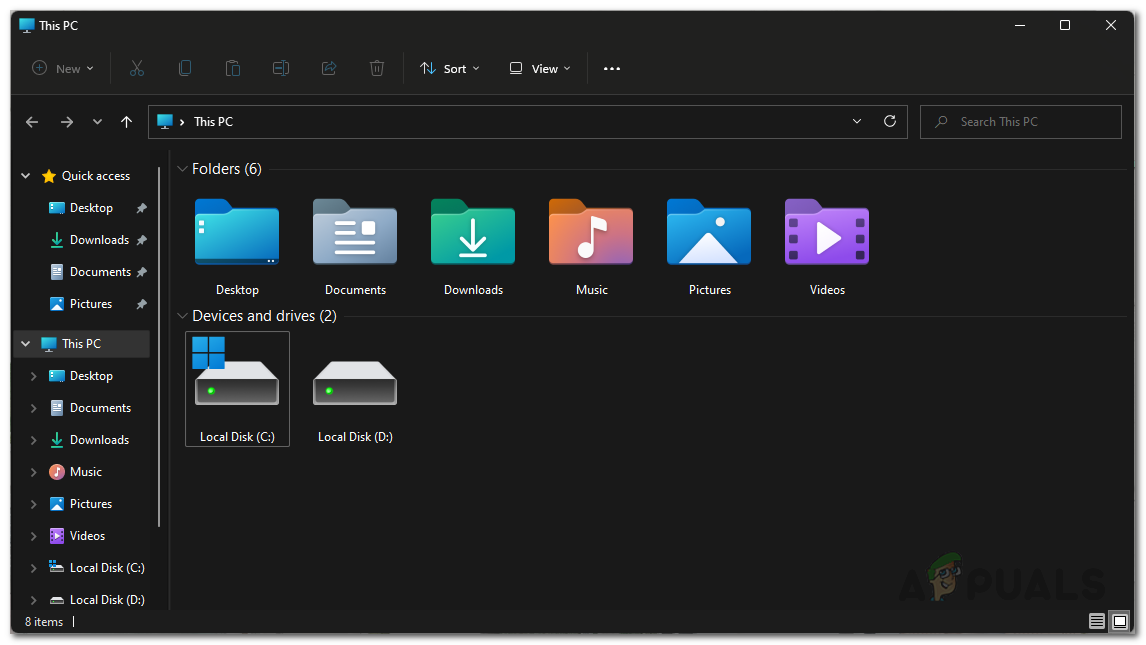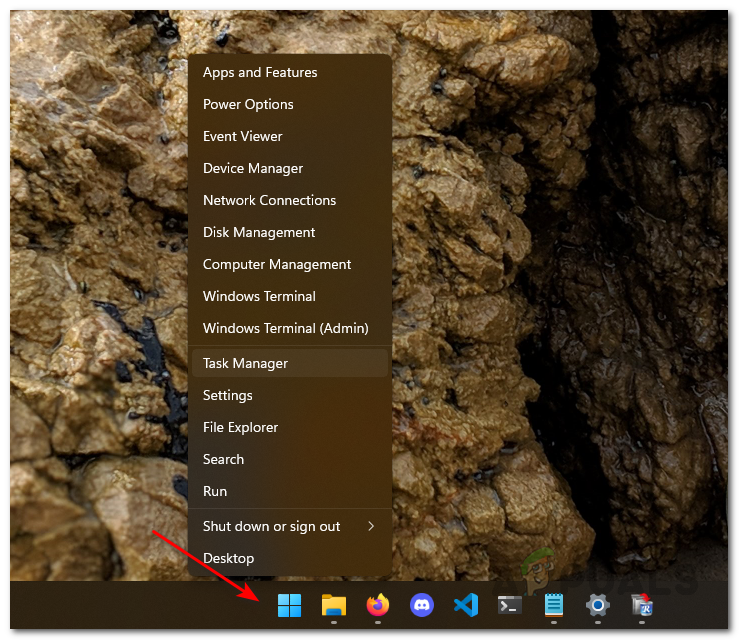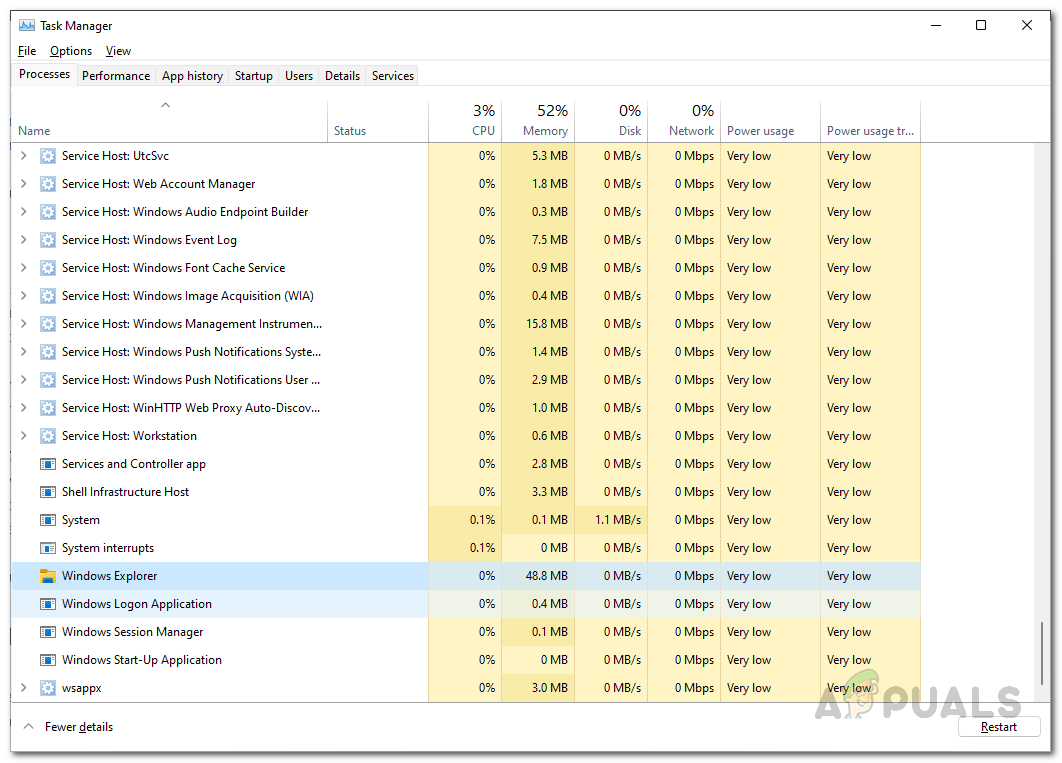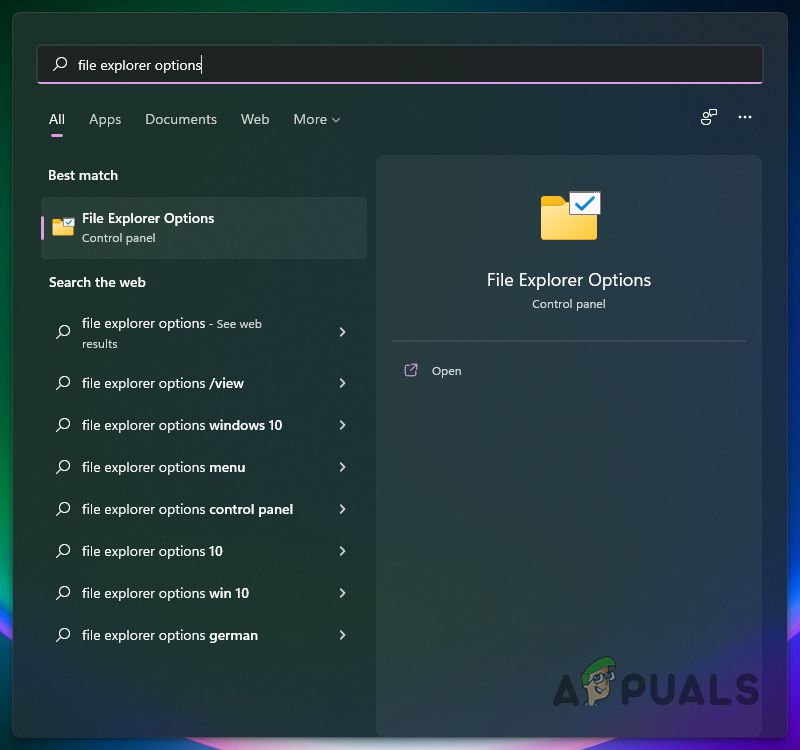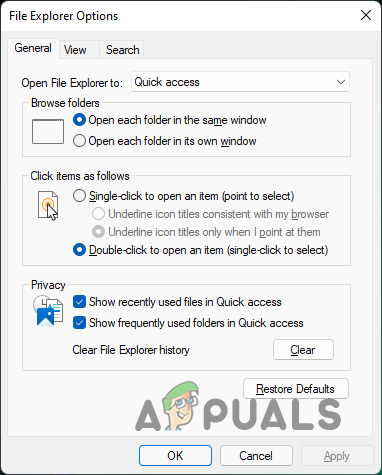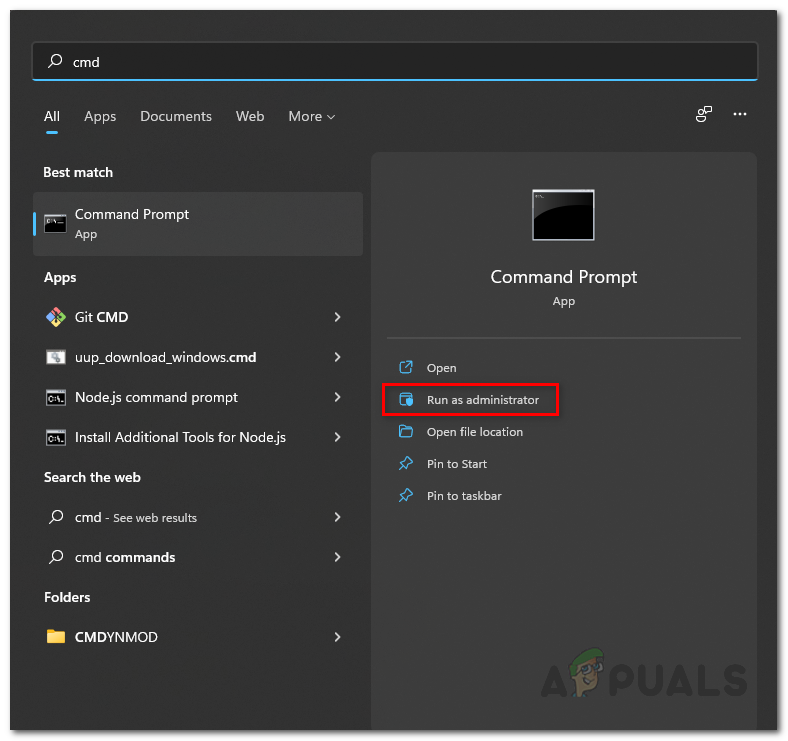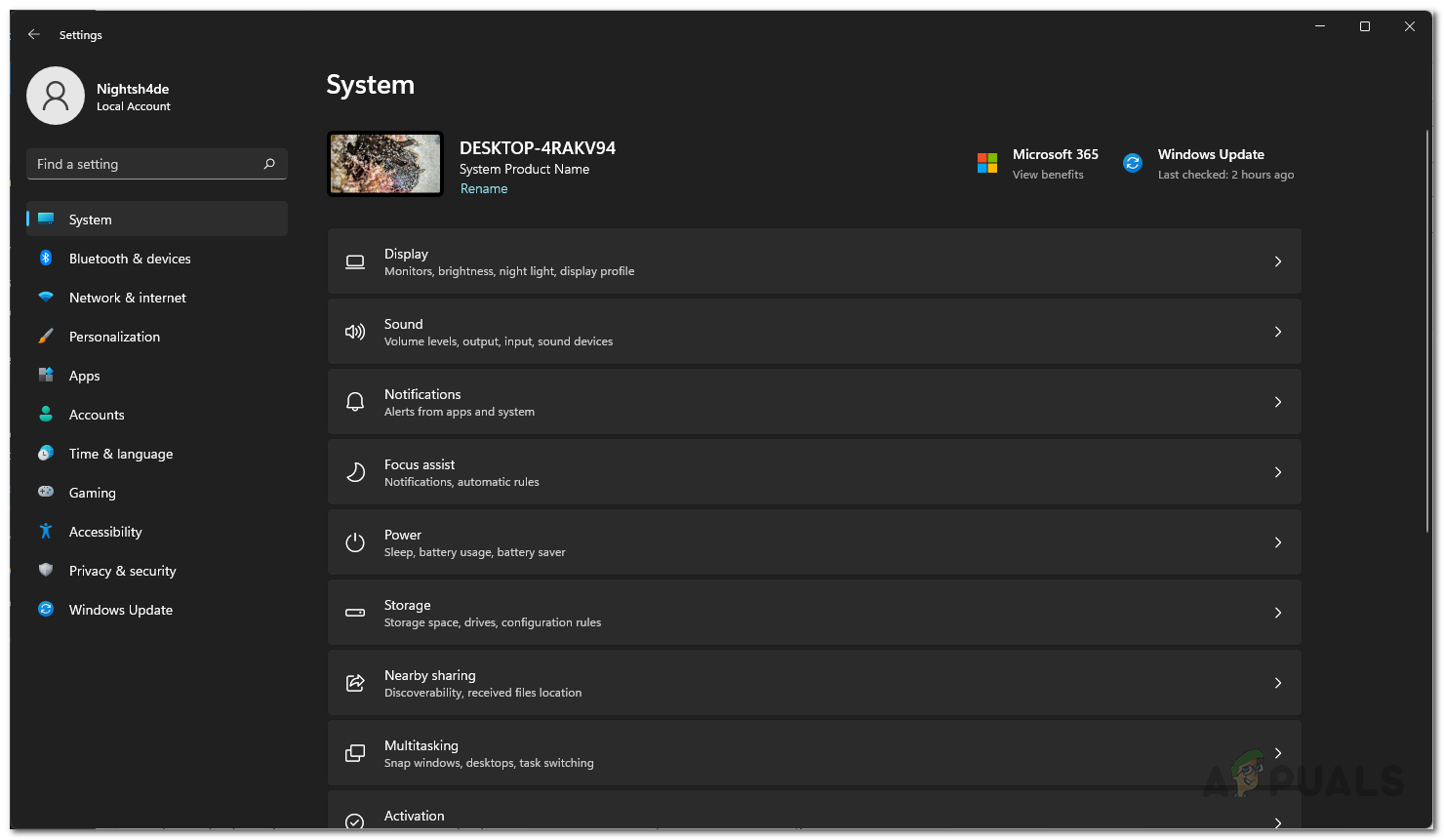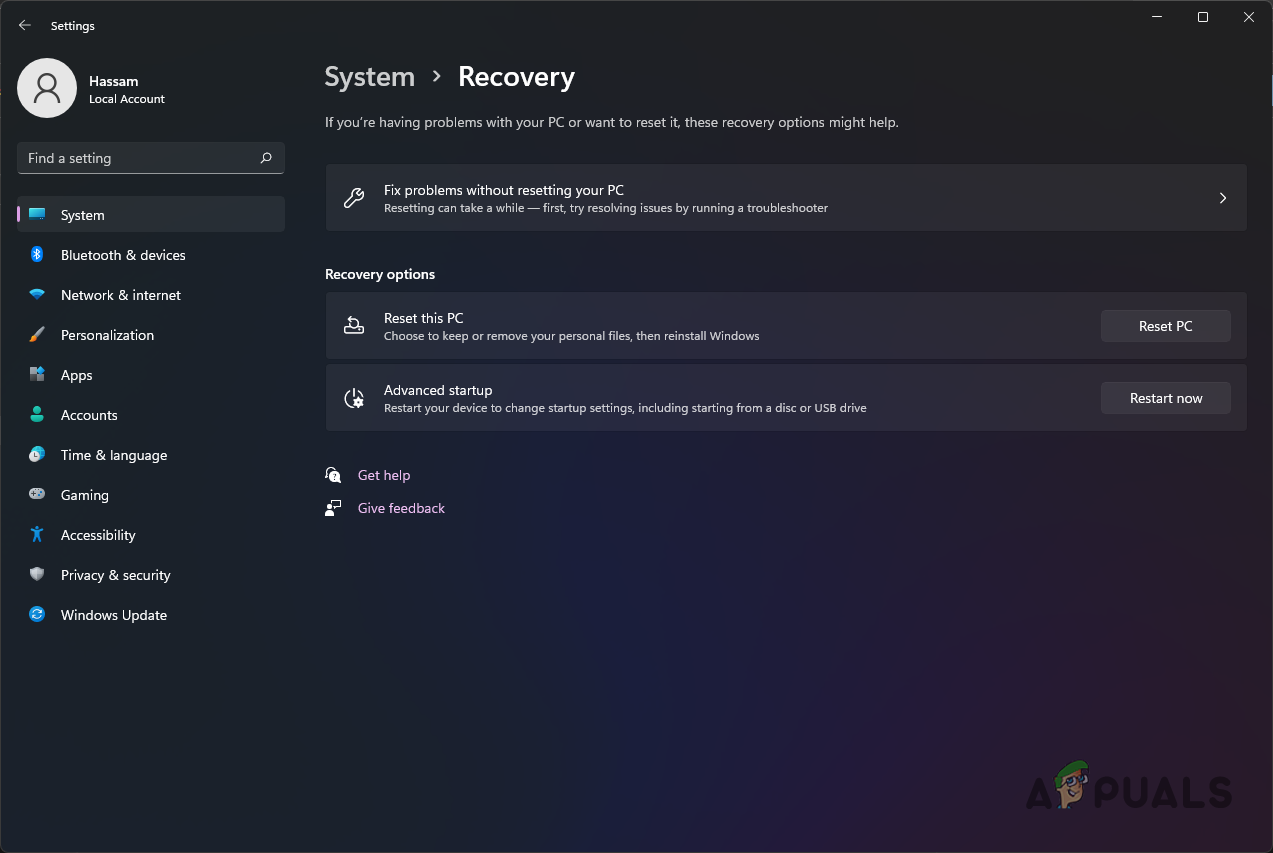As it turns out, the File Explorer is a vital part of the operating system and we all have to use it daily in order to access our files and documents. Now, as we have mentioned, the problem can sometimes occur when the cache files of the File Explorer are corrupted or damaged. In such a scenario, you will have to delete the files so that they can be generated again. In addition to that, in some cases, the problem can also arise if your system has some corruption which can be resolved by performing an SFC scan. With that said, let us get started and show you the different methods that you can use to circumvent the issue in question without further ado.
Restart File Explorer Process
The first thing that you should do when your File Explorer is not starting up is to restart the process. As it turns out, the problem can occur, in some cases, when the explorer process does not start properly or bugs out. In such a scenario, you can easily resolve the issue by simply restarting the process from the Task Manager. To do this, follow the instructions given down below:
Clear File Explorer Cache
As it turns out, another reason that the problem may be surfacing is due to the cache files that are stored on your system. Cache is pretty common and every app that you use on your system has its own cache files that are often used to store general settings or info about how you use the app in order to make the experience smoother in future. In this case, your search history is stored by File Explorer. If the cache files are corrupted, it can prevent the application from starting up. In such a scenario, you can fix the problem by clearing out the cache. These files are temporary so you don’t have to worry about anything while deleting them as they will be generated the next time you start File Explorer. To do this, follow the instructions given down below:
Run SFC Scan
File Explorer is a part of the Windows operating system and comes pre-installed as we all know. In some cases, the problem can originate when your system files are damaged or corrupted. If this case is applicable, you will have to run the SFC scan on your system. System File Checker or SFC scans your system files for any corruption and in case of any anomalies, the damaged files are replaced with a cached copy. After the SFC scan, we will be running the DISM tool that will repair the corrupted system components. Follow the instructions given down below:
Reset Windows
Finally, if the above solutions have not fixed the problem for you, then in such a scenario, you will have to reset your Windows operating system. Resetting your PC is essentially like reinstalling Windows. However, you are given the choice of choosing what files or programs to keep and what to remove. That way, you do not lose the data that you have on your system drive like you normally would by performing a clean installation of Windows. To reset your PC, follow the instructions given down below:
Apple Pencil Not Working? Try these methodsHalo Infinite Arbiter.dll was not found? Try these methodsReady or Not Crashing? Try these methodsiPhone Voicemail not Working? Try these methods
